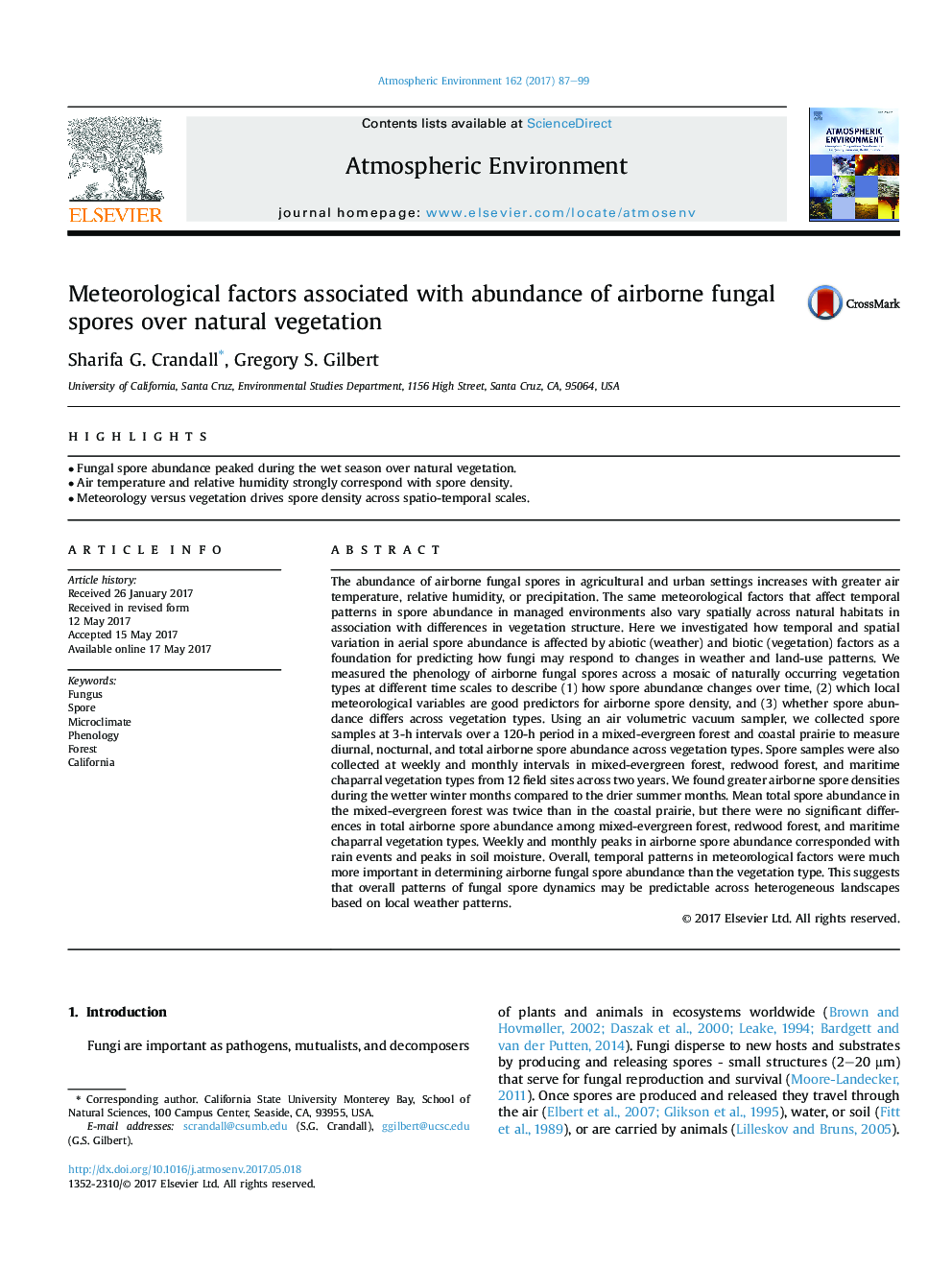| کد مقاله | کد نشریه | سال انتشار | مقاله انگلیسی | نسخه تمام متن |
|---|---|---|---|---|
| 5753036 | 1620312 | 2017 | 13 صفحه PDF | دانلود رایگان |
- Fungal spore abundance peaked during the wet season over natural vegetation.
- Air temperature and relative humidity strongly correspond with spore density.
- Meteorology versus vegetation drives spore density across spatio-temporal scales.
The abundance of airborne fungal spores in agricultural and urban settings increases with greater air temperature, relative humidity, or precipitation. The same meteorological factors that affect temporal patterns in spore abundance in managed environments also vary spatially across natural habitats in association with differences in vegetation structure. Here we investigated how temporal and spatial variation in aerial spore abundance is affected by abiotic (weather) and biotic (vegetation) factors as a foundation for predicting how fungi may respond to changes in weather and land-use patterns. We measured the phenology of airborne fungal spores across a mosaic of naturally occurring vegetation types at different time scales to describe (1) how spore abundance changes over time, (2) which local meteorological variables are good predictors for airborne spore density, and (3) whether spore abundance differs across vegetation types. Using an air volumetric vacuum sampler, we collected spore samples at 3-h intervals over a 120-h period in a mixed-evergreen forest and coastal prairie to measure diurnal, nocturnal, and total airborne spore abundance across vegetation types. Spore samples were also collected at weekly and monthly intervals in mixed-evergreen forest, redwood forest, and maritime chaparral vegetation types from 12 field sites across two years. We found greater airborne spore densities during the wetter winter months compared to the drier summer months. Mean total spore abundance in the mixed-evergreen forest was twice than in the coastal prairie, but there were no significant differences in total airborne spore abundance among mixed-evergreen forest, redwood forest, and maritime chaparral vegetation types. Weekly and monthly peaks in airborne spore abundance corresponded with rain events and peaks in soil moisture. Overall, temporal patterns in meteorological factors were much more important in determining airborne fungal spore abundance than the vegetation type. This suggests that overall patterns of fungal spore dynamics may be predictable across heterogeneous landscapes based on local weather patterns.
Journal: Atmospheric Environment - Volume 162, August 2017, Pages 87-99
